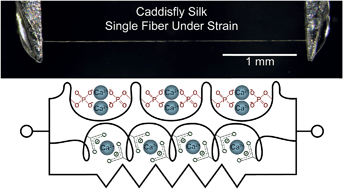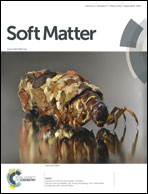Self-recovering caddisfly silk: energy dissipating, Ca2+-dependent, double dynamic network fibers
Abstract
Single fibers of the sticky underwater larval silk of the casemaker caddisfly (H. occidentalis) are viscoelastic, display large strain cycle hysteresis, and self-recover 99% of their initial stiffness and strength within 120 min. Mechanical response to cyclical strains suggested viscoelasticity is due to two independent, self-recovering Ca2+-crosslinked networks. The networks display distinct pH dependence. The first network is attributed to Ca2+-stabilized phosphoserine motifs in H-fibroin, the second to Ca2+ complexed carboxylate groups in the N-terminus of H-fibroin and a PEVK-like protein. These assignments were corroborated by IR spectroscopy. The results are consolidated into a multi-network model in which reversible rupture of the Ca2+-crosslinked domains at a critical stress results in pseudo-plastic deformation. Slow refolding of the domains results in nearly full recovery of fiber length, stiffness, and strength. The fiber toughening, energy dissipation, and recovery mechanisms, are highly adaptive for the high energy aquatic environment of caddisfly larvae.

- This article is part of the themed collection: Silk and silk-inspired materials

 Please wait while we load your content...
Please wait while we load your content...